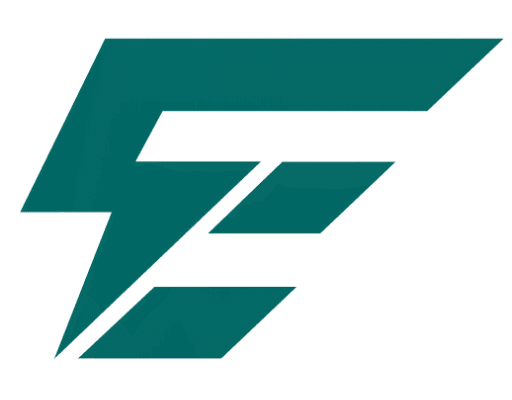Knowledge of the basics of electrical power systems is essential for making life easier, especially in residential and industrial conditions. But, for sure, the most widespread forms of power sources are single-phase and three-phase, each serving quite different functions and uses. So, what is precisely the difference between the single-phase power and the three-phase one? The fundamental differences between the two types of power supplies, including their functioning, use, benefits, and restrictions, are addressed in this paper. This article will also provide you with the necessary information to better understand power supply systems and the process of delivering electricity to homes or for various projects. So, this is where you can gain the basic knowledge in one way or another, and you will still find it all when you reach back to the early stages of power systems.
Introduction to Electric Power
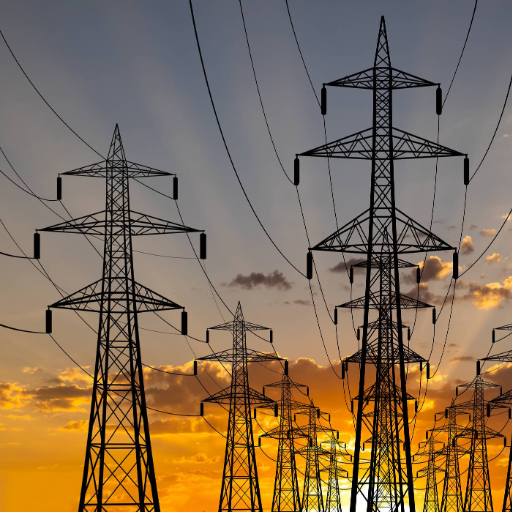
Electric power is the rate at which electricity is transformed or moved to be used in a work-like fashion, such as lighting a bulb or running a machine. It is a basic requirement for modern living because it enables a wide range of technologies and conveniences. Typically, electric power systems work either on alternating current (AC) or direct current (DC). The power for the AC will change direction periodically, providing high-efficiency transmission capability over longer distances. In contrast, DC electric power flows in one direction and is primarily used by batteries and electronic gadgets. Knowledge of these systems, as well as their applications, can guide individuals and companies to wise energy use and infrastructure decisions.
Defining Electric Power
The flow of electric power is defined as the amount of electrical energy that is moved by an electric circuit in a specific period of time. It is one of the most important concepts in modern technology that greatly influences how energy is made, sent, and utilized. The usual way power is calculated is by multiplying the current in a circuit by the voltage. The electric power is almost always in watts (W). Electric power can still be divided into the following three main power categories in AC systems: active power, reactive power, and apparent power. The first type of power, active power, measured in watts, indicates the actual energy used or converted into work. The second type, reactive power, measured in VAR (volt-amps reactive), is used to feed the magnetic and electric fields necessary for the operation of AC equipment. The power that the two other types of power of the circuit together give is called the apparent power — expressed in VA (voltage-amps). A good acquaintance with those power types is the basis for making the electric power supply the most efficient and, at the same time, minimizing power losses in domestic and industrial sectors.
Importance of Understanding Power Types
It is essential to understand the different types of power for efficient electrical system designs and maintenance. By exemplifying the correct measurement and management of active, reactive, and apparent power, energy efficiency can be enhanced, electricity costs reduced, and system losses minimized. With the development of smart grid technology and real-time energy monitoring tools, power patterns can be studied by industries and households in a more sophisticated way, leading to the disclosure of inefficiencies. Moreover, recognizing power quality issues, such as voltage spikes or harmonic distortions, accelerates the implementation of protection measures and consequently increases the reliability and sustainability of electrical equipment. Thus, this particular knowledge not only promotes the use of renewable energy but also supports the rapid development of the energy landscape and enhances professional and consumer decision-making power.
Overview of Single-Phase and Three-Phase Power
Single-phase and three-phase power are two different methods of connecting electricity, each suitable for various types of uses and energy consumption. Single-phase energy, commonly applied in the residential sector, draws power in the form of an alternating current and is the ideal power source for household appliances, lighting, and low-power devices. On the other hand, single-phase is less complicated and less efficient to use in high-power applications.
In contrast, three-phase power is widely used in industrial and commercial sectors because the system is designed for installing and connecting high-energy-demand and large machines. This system has three interchanging currents, each with a phase shift, which gives a smoother and more equal energy output. The outcome of such an even delivery of energy is improved performance with lower efficiency and less energy wastage, making three-phase systems essential for industries like manufacturing, HVAC, and data centers. Knowing the differences between these two power systems, one can also optimize the energy usage to the individual requirements and hence secure the needed reliability and cost-effectiveness in the target applications.
Fundamentals of Single-Phase Power
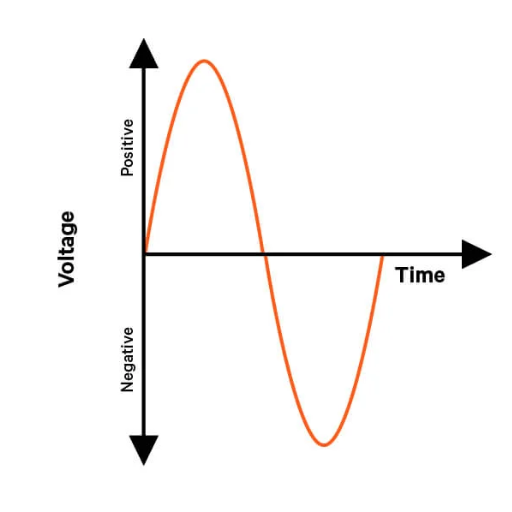
Single-phase power is the most practical method of energy transmission, widely used in houses and small commercial areas. It operates on a single AC signal, which passes through two wires, one of which is the phase and the other is an earth wire. This technology is said to be the most reliable and the cheapest to install compared to the three-phase system. Nonetheless, it is a drawback for use in low-power devices because it is less economical for high-power loads. This type of system is very effective for operating household equipment, lighting, and small gadgets.
What is Single-Phase Power?
Single-phase power is the standard for domestic and small business usages, thanks to its ease of handling and cost-effectiveness. A significant advantage is its simple structure, which requires fewer parts for both installation and maintenance, resulting in lower costs. One of its many use cases is power supply to different household devices like refrigerators, televisions, and lighting systems. Single-phase power is, however, not really suitable for high-demand electrical loads connected to it. A single-phase power distribution system may experience constant voltage dips or fluctuations during peak hours because it cannot flow a continuous energy stream. This is a reason why it is not suitable for the requirements of industrial machinery or large office buildings that need a power supply that is not only continuous but also stable. Three-phase power is ideal for high-demand applications as it contributes to higher efficiency and more power.
Characteristics of Single-Phase Power
Simpler Design:
There is a basic simplicity in the single-phase power system design, as it is a two-wire system: one for the phase and the other for the neutral. This basicness in design has its own dividends in the ease of installation and maintenance when compared to three-phase systems.
Lower Cost:
With the use of less technology, single-phase systems are easy to implement, which further makes them the perfect choice for small businesses and residential areas that are not very large.
Voltage Level:
Single-phase power is usually available in two voltage levels only – 120V or 240V, which are generally sufficient for many domestic and commercial applications, e.g., lighting and heating.
Limited Load Capacity:
The issue of the low load capacities being taken for granted is that the single-phase system cannot support high-demand equipment, let alone industrial operations.
Energy Efficiency:
Although sufficient for small-scale projects, single-phase systems are not the best option for primary power transfer because they experience higher energy losses over distances compared to three-phase systems.
Frequent Voltage Fluctuations:
Single-phase electricity services are highly reactive to power changes, especially under heavy loads, and voltage characteristics might eventually lead to non-optimal performance of electronic devices requiring high precision.
Common Uses of Single-Phase Power
Residential Wiring:
Mostly, single-phase systems are perfect for typical domestic power needs, as the power amount doesn’t surpass typical voltage and current limits. How is it so? That was only the first phase described regarding the power supply in the domestic sector, excluding the other phases.
Small Businesses and Offices:
The primary use of single-phase power is in the household. The domestic sector uses single-phase power for lighting, televisions, refrigerators, fans, air conditioners, and other appliances essential to the domestic electrical system.
Agricultural Equipment:
Single-phase will predominantly be used in homes and small residences for the indicated and similar purposes. Residential areas with minimal power usage mostly use single-phase power, not three-phase.
Small Industrial Equipment:
Small-scale industry and repair shop type machines, workshop tools, and equipment, such as drills, saws, and compressors, are most often energized by a single-phase system.
Portable Generators and Backup Systems:
Mobile generators used during power outages usually yield single-phase power as a standard output. These are generally small units delivering sufficient energy for only the very essential household or small business appliances.
Lighting Installations:
Lighting installations are the primary users of single-phase systems in residential, commercial, and public environments. They even extend to street lighting, decorative lighting, and emergency lighting sources.
Three-Phase Power Explained
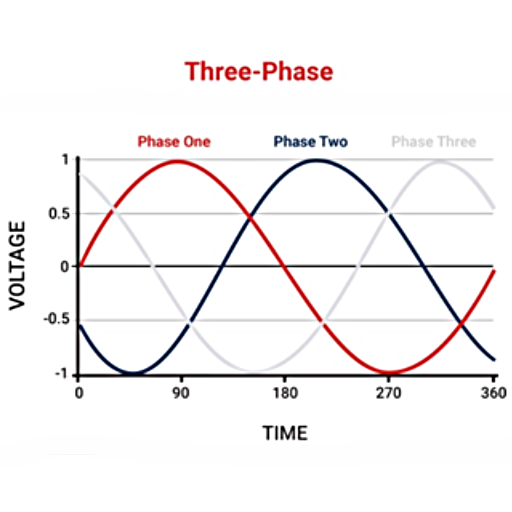
A three-phase power system is a way of electricity transportation that is frequently seen in industrial, commercial, and large residential markets. In comparison to single-phase power, three-phase power is carried by three AC voltages, each out of phase by 120 degrees with the others. The system allows for a stable and better-balanced electrical current. Consequently, it is seen as a more preferable option for the operation of large machinery and high electrical loads because of its energy-saving possibilities. Besides, three-phase power systems cut energy losses and make smaller wiring less expensive compared to single-phase systems.
Benefits of Three-Phase Power
Higher Efficiency
When compared to single-phase systems, three-phase power systems have a higher level of energy efficiency. The constant, evenly distributed power that they deliver is the key reason little power is wasted during transmission. The studies discovered that three-phase systems could reduce the power loss up to 25% under the same load conditions when compared with the single-phase setups.
Lower Installation Costs
Less-expensive electricity wiring results from this balanced power flow in three-phase systems. Businesses and industries are among the biggest beneficiaries who will realize huge savings in equipment and installation costs, especially in the presence of high-power machinery.
Ability to Handle Higher Loads
One of the best applications of three-phase power is for heavy loads, making it ideal for industrial equipment, manufacturing processes, and large commercial operations. For example, machines like motors, compressors, and HVAC systems will run more smoothly and offer higher reliability with three-phase electricity.
Improved Stability and Reliability
The idea behind this system is to have three phases of electricity that are 120 degrees apart to produce a continuous power supply. The stability of the power supply minimizes fluctuations, making the operation of electric machinery more predictable, which in turn results in less wear and tear on the equipment.
Versatility in Applications
Three-phase power systems are so versatile that they can be used in small workshops as well as in large factories. One of the more important features is the generation of renewable energy from such power systems. Wind turbines and solar panels are powered by these systems, which transmit and distribute the power in a very efficient manner.
Enhanced Scalability
If a factory or industry were to switch to three-phase power, it could, in the long run, increase its activities without the great expense of rewiring the entire electricity system. And since downtime in machining and production maintenance can sometimes result in a considerable loss of revenue, the total cost could be crippling.
Applications of Three-Phase Power
Manufacturing and Industrial Settings
Three-phase electricity is a system commonly used in factories and large industries. It supplies power to heavy machinery, such as conveyor belts, compressors, and motors. To illustrate, the majority of large industrial motors are mainly dependent on three-phase power, which ensures their smooth operation and reduces maintenance costs.
Renewable Energy Systems
The power generated by the wind turbines and the huge solar panels in the renewable energy sector is distributed through the three-wire power system. In fact, such systems need the electrical distribution and conversion to be done most effectively, and this is where three-phase power comes in. For example, three-phase systems are used in most (>60%) of the wind turbines above 1 MW for grid integration and optimal energy transfer.
Electrical Grids
To ensure electricity is delivered efficiently over long distances, power companies use three-phase power. The stable power supply in cities, towns, and villages, along with minimal energy loss, is the result of it. Power loss reduction studies have, in fact, demonstrated that three-phase transmission systems can reduce power loss by up to 25% compared to single-phase systems.
Data Centers
The high energy demands of data centers are successfully supported by three-phase power as it evenly distributes electrical loads. With servers and cooling systems running non-stop, three-phase power not only assures reliability but also enhances it, helping to maintain a full load capacity and preventing costly disruptions.
Large Commercial Buildings
The difference can be found in heavy and light industries, where one is based on overproduction and another one on high demand/low cycle time. Three-phase power is an essential part of both of these industries. It is also a must for other commercial establishments like shopping malls and hospitals.
Transportation Systems
When it comes to transportation, three-phase power is considered the most reliable source of power for railroads and railways. The feature that attracts powered railroads using three-phase power is the power supply.
Comparing Single-Phase and Three-Phase Power
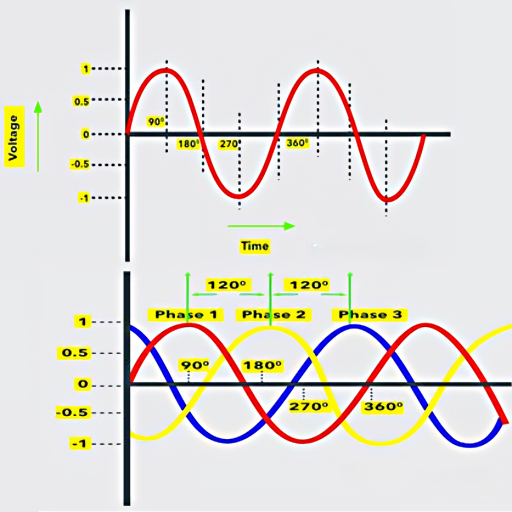
Single-phase power is usually used in houses and small-scale settings because of its simplicity and lower expense. It carries electric power on a single alternating current, which is sufficient for lighting, small appliances, and general household needs. The disadvantage of this type of electric power is its lower efficiency in handling heavy electric loads or operating large equipment.
In contrast, three-phase power is meant for industry and commerce. This system transmits electricity through three alternating currents, thus resulting in a more stable and reliable power supply. This arrangement of a phased power system guarantees not only higher efficiency but also better load handling and reduced energy losses, making it the best power for machines, transport systems, and large buildings.
If you are thinking of one phase to three-phase power, please, do consider the size of the place and its energy needs. One-phase power is ideal for a regular house, while three-phase power is more suitable for industries because they have a lot of high-power equipment and require a stable power supply that is not prone to phase shortages.
Key Differences Between Single-Phase and Three-Phase Power
| Parameter | Single-Phase Power | Three-Phase Power |
|---|---|---|
| Voltage Phases | One single phase | Three alternating phases |
| Power Delivery | Variable, inconsistent | Steady and continuous |
| Efficiency | Less efficient | Highly efficient |
| Applications | Residential and small-scale equipment | Industrial and large machinery |
| Power Capacity | Lower capacity | Higher capacity |
| Stability | More prone to fluctuation | Greater stability |
| Wiring Requirements | Requires two wires | Requires three or four wires |
| Installation Cost | Less expensive | More expensive |
| Energy Losses | Higher energy losses | Lower energy losses |
| Starting Torque | Limited starting torque | High starting torque |
Performance and Efficiency Considerations
It is of paramount importance to look into the application’s specific requirements while assessing performance and efficiency. One thing to note is that single-phase systems are frequently the best choice for smaller loads that are easy to manage. Moreover, the systems are pretty easy to work with. On the other hand, large-scale operations suffer significantly due to higher energy losses and voltage fluctuations.
On the contrary, three-phase systems are the best solution for the most part in the industrial and high-demand areas owing to their higher stability, lower energy losses, and more starting torque. The load can be much larger and the operation can still be completed with less loss, all the plus points of the systems on the whole make them more efficient and also durable in the long run. Sometimes the installation cost can be high at the beginning. Still, the energy savings and the system’s reliability will likely provide a return on the investment, either in commercial or industrial purposes.
Cost Implications of Each Type
Comparing the cost impacts of single-phase and three-phase power systems, it can be seen that while the initial installation cost is similar, the long-term operating cost differs. The initial installation of single-phase systems is generally less costly as they need fewer parts and less complicated infrastructure. Thus, the single-phase systems could be an economically feasible option for household applications or small businesses requiring only a modest amount of power. In addition, maintenance costs for the single-phase system are usually lower than those of the three-phase one due to its simplistic design and limited demand.
However, installing a three-phase power system from the start requires a larger initial investment due to the additional wires, transformers, and other specialized equipment needed to distribute power effectively. But it usually takes only a short while for a business to get even with the investment, in the best case, due to the utilization of three-phase power in its industrial or commercial operations. With better energy-saving potential, reduced power loss through transmission, and a greater capacity to handle heavy equipment, three-phase systems can really save you a lot of money in the long run. Often, the use of three-phase systems receives positive feedback for cost-effectiveness from businesses with heavy machinery operations or high electricity consumption. Besides the savings from reduced energy waste, the improvement of system reliability is also considered a cost-saving factor by the industry. In the end, whether to choose the three-phase or single-phase power system heavily relies on the specific power demands, the operational scale of the intended application, and, not least of all, budgetary limitations.
Power Distribution Systems
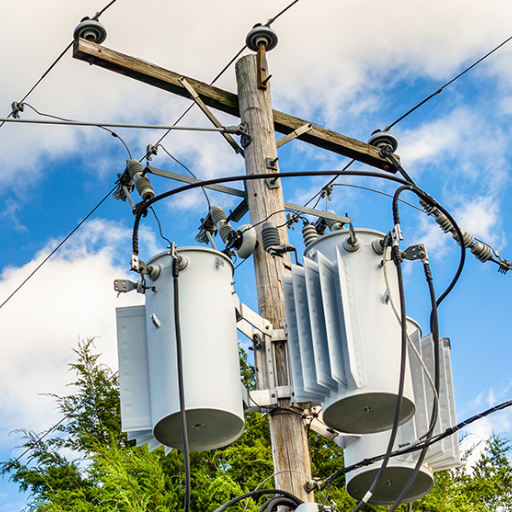
Modern power systems are equipped with several significant benefits, primarily characterized by improved efficiency, increased reliability, and enhanced scalability. Energy loss during transmission is minimized, thereby making power delivery to end users more efficient. Technological innovations are now being used in these systems, including smart grids that enable real-time monitoring and management of grid operations, leading to reduced outage risk and quicker problem responses. Likewise, the design and technology of modern devices enable applications to regulate systems according to demand, allowing them to be used in both small and large-scale installations. Besides, they can be run by renewable sources of energy, thus contributing to environmentally friendly and self-sustainable power system layouts.
Overview of Power Distribution
Modern power distribution grids play a crucial role in securing a steady and efficient transfer of power from their sources to their consumers. They are marked by their flexibility and easily expandable design, allowing them to handle various energy needs and incorporate different technologies. For example, using automation and machine learning to monitor grid performance and predict possible faults greatly helps in reducing downtime and improving customer satisfaction.
Additionally, these systems prioritize sustainability; therefore, they have become sources for renewables like solar and wind energy by incorporating them through the grid. And by pairing these with energy storage solutions, e.g., advanced battery technologies, the grid can save and eventually drop the energy it amassed during peak production times when demand surges. In such a scenario, it will not only reduce greenhouse gas emissions but also enhance energy security by eliminating the need for non-renewable sources.
Real-time data monitoring and analysis instruments are crucial in the transition to solar and wind power, powering micro- and cell phones, and providing energy-efficient lighting for homes and commercial buildings. Additionally, power configurations, notably phasing, significantly reduce refractory emissions, primarily resulting from power distribution.
Single Phase vs. Three Phase in Power Distribution
Analyzing single-phase and three-phase power systems requires understanding the significant disparities between them to pinpoint their distinct uses and advantages. One of the key disadvantages of single-phase power is that it is mainly designed for use in households with a lower consumption of power. It works with only one alternating current (AC) waveform, which is simple and cheaper to use for home appliances and lighting systems. However, it is not efficient for running large-scale equipment due to its lack of capacity.
On the contrary, three-phase power is commonly used in the industrial and commercial sectors, as it is more efficient and can carry high loads. The main advantage of this type of power is that it consists of three waveforms that are 120 degrees apart, making the power supply much smoother and more stable. Therefore, it is essential for power losses to be minimized, and for the power to be ready to fully support heavy machinery, HVAC processes, and so on. Furthermore, the main reason three-phase power systems are cost-effective for large-scale operations is that the three load lines always remain at the same power level.
The needs, size, and energy efficiency of the application determine the selection of one of the two systems for power distribution. The evolution of energy management systems not only increases their capabilities but also enhances their sustainability, thus contributing to a more robust energy infrastructure geared towards the future.
Reference Sources
A simple modulation strategy for full ZVS of single-stage electrolytic capacitor-less EV charger with universal input
Summary: This paper presents a novel modulation strategy for single-stage onboard chargers (OBCs) used in electric vehicles. The strategy enables zero-voltage switching (ZVS) across a universal AC input, improving efficiency and reducing energy losses.
A Novel Sinusoidal Extended Phase Shift Modulation With Minimal Loss for Single-Stage Onboard Chargers for Electrical Vehicles
Summary: This research introduces a sinusoidal extended phase shift modulation technique for single-stage onboard chargers (SSOBCs). It addresses challenges like achieving a unity power factor while minimizing energy losses.
Frequently Asked Questions (FAQs)
What is the Difference Between Single-Phase and Three-Phase Power?
Single-phase power distribution is an electrical power distribution where a single AC sine wave is used. In contrast, three-phase power generation uses three separate sine waves with a 120-degree phase difference from one another. Such a principal discrepancy makes three-phase power supply more beneficial in terms of power delivery capacity and overall efficiency, thus more suitable for the power supply demands of the commercial and industrial sectors. Single-phase power is the option for most residential applications that require electrical power for lighting, heating, etc. With respect to power users, a three-phase power system can handle more power and is less likely to overload than a single-phase system. Choosing between single and three-phase systems depends on how much power the application needs.
What Are the Advantages of Single-Phase Power Supplies?
Single-phase power supplies offer several advantages, particularly when the power demand is low, such as in a residential setting. They are easy and hence simpler for installation and maintenance by nearby electricians. On the whole, fewer of these devices are required for a single-phase connection. This drastically decreases the labour and material costs associated with the entire setup of the location or facilities. Apart from that, the single-phase systems will always sit at a voltage that is suitable for residential lighting or heating. This being said, single-phase power is not always able to deliver the desired output to the larger motors or big machines. Often, the latter may fall into the category of heavy machinery and electric motors that operate better with three-phase power.
How Does Three-Phase Power Distribution Work?
Power distribution in three phases involves the use of three power conductors, each of which carries an alternating current that has a different phase from the others. The system created in this way ensures a more constant and effective power flow, making it ideal for large motors and industrial plants. The three separate phases create a more pleasant delivery of power, resulting in fewer voltage spikes and dips compared to a single-phase system. In addition to this, three-phase power can supply three times the power of a single-phase system, making it an excellent choice for business use. In exceptional cases where three-phase systems have neutral conductors, this implementation is one of the safest and most stable ways to distribute power.
What is the Significance of the Neutral Wire in Single and Three-Phase Systems?
The neutral wire is critical in both single-phase and three-phase power supply systems, as it acts as the conductor for the current to flow back in the circuit. In a single-phase system, the neutral wire does the load balancing job and, very importantly, keeps the voltages uniform. In a three-phase system, the neutral wire can handle fluctuations in the phase current that might cause a voltage unbalance. The neutral wire is a key element in the safety of the three-phase system and serves as a reference for the phase wires. It is possible to introduce single-phase loads to the three-phase system when there is a neutral wire, making it very flexible for use in various applications.
